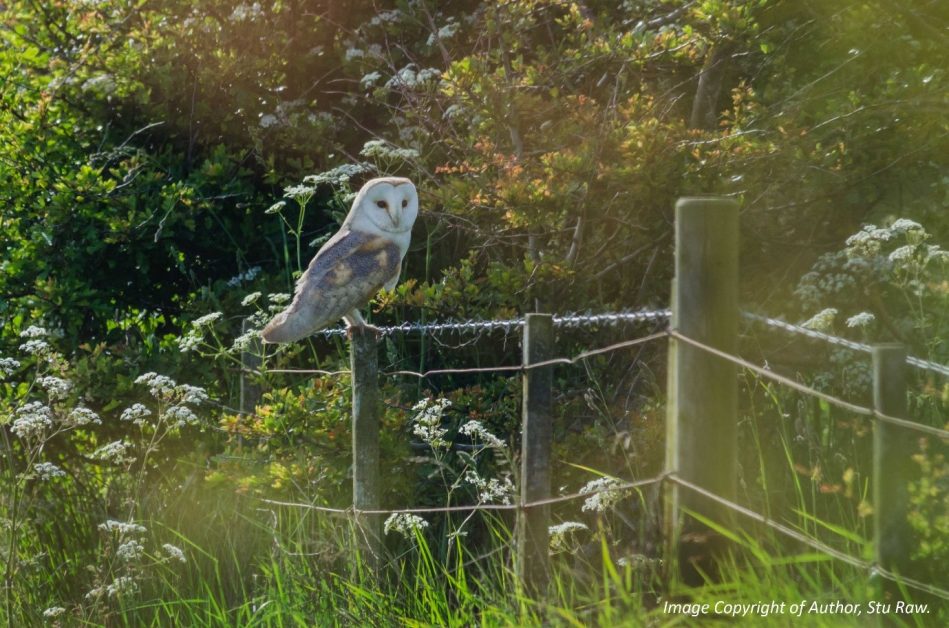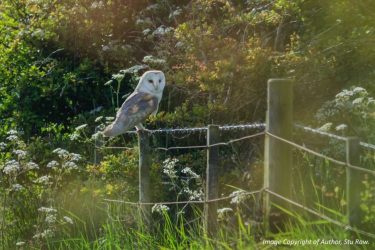Over the last 50 years, British agriculture has seen a significant increase in the demand for food production. This has resulted in intensive farming and highly increased yields. However, the success has come at a considerable cost to farmland biodiversity. For example, farmland bird populations have declined by 55% since 1970. The number of tree sparrows has dropped by over 80%.
The encouraging news is that the decline in bird numbers can be combated inexpensively. Better still, it can be done in a way that can improve farm performance and help your bottom line. Here, we present five top tips to help you increase bird populations on your farm.
1. Leave portions of uncultivated land
Introduce areas of uncultivated land in the form of flowering buffer strips or field margins. This creates a more complex landscape with a higher floral diversity.
Uncultivated environments provide more foraging opportunities for insectivorous birds, whilst fruiting plants can sustain over-wintering birds. It also provides shelter and nesting sites protected from the elements and predators alike. Other habitat pockets can also be linked by these newly established corridors, aiding dispersal.
Uncultivated land can also benefit your farm. Pollination is a crucial ecosystem service and restoring flowering buffer strips can encourage pollinators.
Research has shown that by increasing the amount of uncultivated land in a field, yields can increase despite having less land dedicated to crops. Birds on your farm can also act as natural predators to pest species, as well as contributing to weed control.
2. Reinstate hedgerows
Hedgerows are an effective way of increasing bird populations.
Hedges were once a common feature across farmland, but many were replaced with alternative stock fencing to maximise field size. By reinstating them, the habitat becomes more diverse, thus providing more nest opportunities. It also introduces more winter food resources and more shelter for various farmland bird species.
In addition, hedgerows serve as habitat corridors, connecting different populations and encouraging general farmland biodiversity. Once hedgerows are mature, they also provide you with a more robust, low maintenance livestock barrier. They can also help reduce surface run off and spray drift, helping to protect local water courses.
Planting trees and hedges is also a great way of reducing your carbon footprint. As they grow, they sequester carbon dioxide which will contribute to reaching the NFU’s ambitious goal of reaching net zero greenhouse gas emissions in the agricultural sector by 2040. The MOREhedges scheme operated by the Woodland Trust currently subsidises up to 75% of the planting costs – a great way to start reinstating those hedgerows.
3. Help alleviate the ‘hungry gap’
During the winter, farmland birds, particularly those that eat seeds, will experience a shortage of food until new crop seeds are planted in the spring. This period is known as the ‘hungry gap’.
Instead of cultivating immediately after the autumn harvest, leave a winter stubble of crop residues and weeds can provide a valuable winter food source. Even just retaining winter stubble on 10% of cropped area will help local birds on your farm. Winter stubble also reduces the risk of soil erosion and surface run off, protecting the soil stability.
4. Building beetle banks helps birds on your farm
Beetle banks are a low-cost alternative pest management technique that uses natural enemies to control pests.
To create a beetle bank, construct an elevated mound of soil in the centre of an arable field, and plant it with non-crop vegetation. By doing this you create an ideal habitat for natural predators, such as carabid beetles, which feed on common crop pests.
The central positioning means these beetles can disperse themselves throughout the crop, providing effective pest control across the whole field.
This will reduce your overheads by reducing the need to apply pesticides and agrochemicals. In addition, these newly formed beetle banks can provide foraging opportunities and shelter for farmland birds – particularly important for ground nesting game birds.
For a fuller guide, see the DEFRA blog Create and Maintain Beetle Banks.
5. Explore available agri-environment schemes
Recently there has been an increase in focus regarding sustainable food production with both public awareness and interest within the farming community.
Incorporating agroecology practices into agricultural systems provides a potential solution to balancing conservation and production.
There are lots of potential environmental schemes available which provide financial incentives to implement alternative land management techniques with the aim of increasing farmland biodiversity.
These are constantly evolving. For example, In January 2023 DEFRA announced updates to its Sustainable Farming Incentive scheme. Some of these require full farm enrolment, whilst others just require a single action. The table below gives a quick guide to three initiatives available via Countryside Stewardship Grants, with links to fuller details.
| Grant Title | Environmental Benefit | Location | Management | 2023 Incentive Payment |
| AB9: Winter Bird Food | Establish a mixed seed strip to provide a supply of winter seeds for birds | Arable land Grassland Bush orchards | >6 metres wide and minimum 0.4ha in size | £732 per hectare |
| OP3: Supplementary Feeding for Farmland Birds | Food resource during late winter until early spring on arable and mixed farms | Organic land Grassland (sown for under 7 years) | Provide 25kg once a week (Dec-April) | £887 per tonne for every 2 hectares |
| UP2: Management of Rough Grazing for Birds | Provides suitable vegetation and sward structure for nesting opportunities | Permanent grassland parcels of at least 2ha | Sward height <5cm on 50% of designated area | £121 per hectare |
Ease your burden – contact me
Although scrolling through all these schemes can seem daunting, the benefits to you and your farmland biodiversity can be significant. Why not save your time by contacting me for more information about encouraging the birds back to your farm?
I am a specialist Sustainability Analyst for Promar. I’m on hand to give you instant advice about what grants you can access, and how to make changes quickly and cost-effectively. Call me on 07890 425837 or email me at stu.raw@genusplc.com
Promar’s Sustainability Consultancy team operates throughout the UK. We are leading the integration of sustainability within the food and agriculture supply chain. Our mission is to help our clients drive efficiency, profitability and resilience whilst also helping to protect the natural environment.






